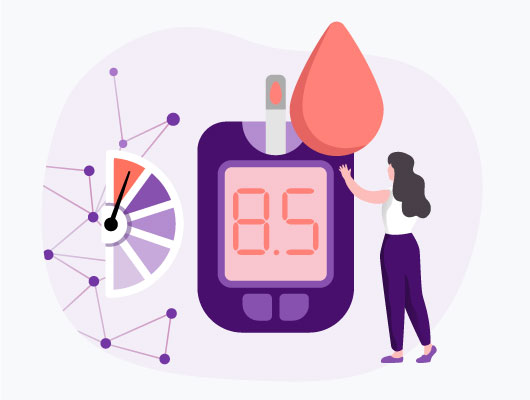Introduction
The doctor has neglected to request all the necessary laboratory tests, an early start of therapy should be examined or the patient should simply be spared an additional venipuncture. These are the typical motivations for issuing a subsequent request to the laboratory [1].
This is a heavy burden for the health system: 3.3% of the total test volume is comprised of additional requests. On average, 1.99 tests are registered per additional request and thus 9.15 tests per patient [2].
Impact of additional requests
The type of laboratory analysis required is decisive for whether an examination can still be carried out in a medically valid manner. The key factor here is the storage time of the samples, which differs considerably between the laboratories at 1-7 days. During this period the samples are stored at temperatures between 2 ° C and 8 ° C [3].
With thousands of samples being taken every day, these are costly and time-consuming. In addition, there must be a renewed interaction between the sender and the laboratory doctor for any additional claims [4]. This disrupts the clinical process and creates delays. Both patients and practitioners are familiar with the sobering sentence: “We still have to wait for the laboratory results.”
Are additional requests often superfluous?
Evaluating the sense and benefit of a laboratory request is not trivial, as the motives for a subsequent request are rarely documented and the gain in knowledge can therefore only be assessed subjectively by the sender.
To target the question above, it helps to shed light on the characteristics of the additional requests. A study from the USA examined all of the requested tests for a week at Massachusetts General Hospital. The study found that the most common demand was for hepatic and renal parameters, electrolytes and glucose, and enzyme markers. This did not necessarily follow the house’s rules. In around 65% of the markers for the acute coronary syndrome, the hospital’s internal protocols were initially not followed, which made follow-up requests essential.
The study also shows that another avoidable reason for additional claims is inadequate communication. 5% were created this way.
On the other hand, 52.5% of the additionally requested tests have abnormal results, which at first glance suggests the relevance of the additional requests. However, it should not be ignored that initial tests often serve to rule out diagnoses and negative results are expected [5].
Solutions
Current studies show that almost 90% of the follow-up requests take place in the first 8 hours after the sample has been taken. Therefore, a storage time of up to 7 days does not make much sense and shows the potential for saving resources there. Correspondingly, a good knowledge of the so-called test shelf life, which describes the individual period in which an old result is still valid, can limit unnecessary additional requests [6].
This ability can be acquired through training courses or electronic gate-keeping systems. Current literature demonstrates the usefulness of an electronic warning system for unnecessary tests [7].
In the case of the options presented, the decision about the sense and necessity of a retesting ultimately remains solely with the subjective assessment of the sender, so that there is a high degree of opportunities to save resources. This is where medicalvalues comes in: There is a separate request engine for assessing the relevance of a test, the output of which represents the potential impact of a test. In addition, a list is an output that catalogs the assumptions leading to the output and their significance. This includes the value for the diagnosis of the respective patient, the costs of the laboratory analysis, the duration and material expenditure of the evaluation, etc. Thus, the medicalvalues system is not a black box whose output cannot be traced but makes it completely transparent for the sender and the laboratory doctor which criteria have provided the output. In everyday clinical practice, several tests are often needed per request; even with additional requests, there are two. medicalvalues takes this into account when evaluating the costs and effort because several tests within one request are cheaper than making a new request.
Ressource-saving only with additional requests?
There is great potential for saving resources not only in the case of additional requests. In 2015, a study was carried out at the Salzburg University Hospital on the necessity of laboratory requests. To quantify this, it was calculated how many of the tests were requested again if the result was lost. The result: more than 60% of the tests were not requested again [8]. With the much larger test volume of initial requests, it is, therefore, possible to act more efficiently with the first request.
Reflex testing
In laboratory analysis, reflex tests describe a meaningful step diagnosis. For example, the thyroid function should be checked: First, the TSH is determined. If this is pathological, fT4 is evaluated first and, if the result is again irregular, fT3 is evaluated. What sounds efficient leads to greater effort for the sender and laboratory doctor in the case of pathological screening. For more specific diagnostics, there must be renewed interaction between the sender and the laboratory doctor. Here, too, medicalvalues helps: If a value is not correct at the beginning, the system can automatically initiate further stage diagnostics.
The graphic illustrates the principle using two real patient cases. The diagnostic procedure in the case described is compared with the recommendations of the German guidelines. These are sometimes very complex and difficult to integrate into everyday clinical practice. In the case of medicalvalues, these are therefore integrated directly into the system so that the doctor is informed of the further diagnostic procedure. This also makes everyday clinical practice more predictable for all other participants. Under circumstances, the diagnosis of the patient can thus be made faster and more cost-effectively. Nevertheless, it offers the possibility to deviate from the guidelines if the individual patient case requires it.
In the first case, a 40-year-old woman presents with icterus and fatigue, suggesting liver involvement. This is usually followed by a liver function test. However, the scope of this differs from the guidelines in this case, and further diagnostics are also more elaborate.
In the second case, a young girl shows typical Cushing’s signs. Further diagnosis is complex, so the guidelines are an important aid.
Outlook: integrative and patient-related diagnostics
Modern medicine is becoming more complex. Doctors from more and more different disciplines are doing their part to provide comprehensive diagnostics. On the other hand, however, this development also places high demands on the transfer of knowledge between one another. The medicalvalues request engine described above is therefore not limited to laboratory medicine, but also integrates other diagnostic tools from other specialist areas.
In many examinations, another component plays a major role in everyday clinical practice: the effort and risk for the patient. In the case of a CSF puncture, for example, this is very high, so there must be a strict indication. This is also taken into account by medicalvalues.
Literature:
[1]: https://www1.health.gov.au/
[2]: https://www.ncbi.nlm.nih.gov/
[3]: https://www.aerztezeitung.de/
[4]: https://medicalvalues.de/
[5]: https://www.ncbi.nlm.nih.gov/
[6]: https://www.sciencedirect.com/



